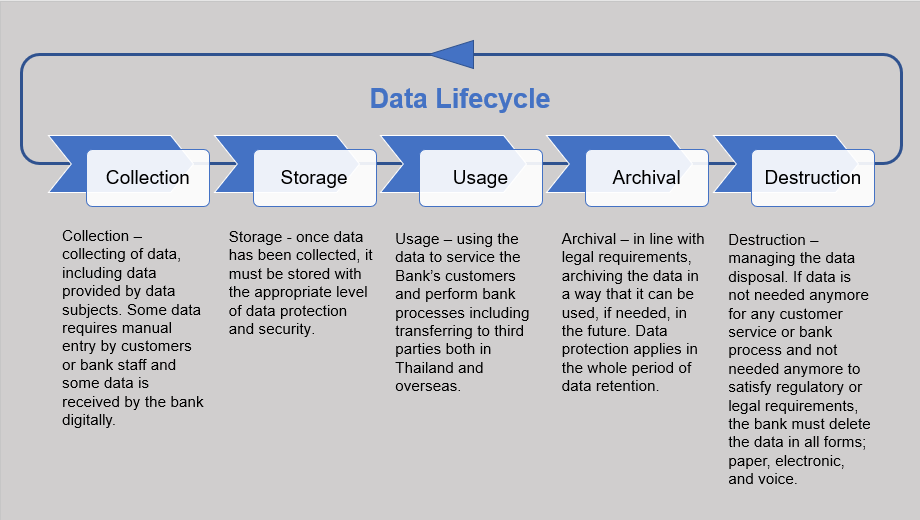The Importance of Effective Data Devastation Practices in Shielding Sensitive Info and Ensuring Computer Safety And Security
In an era where information breaches are progressively common, the importance of reliable information destruction practices can not be overemphasized. Implementing robust information destruction techniques not only mitigates these dangers but additionally aligns with lawful conformity demands, making certain that companies support their reputation and foster client trust.
Understanding Information Damage
Understanding information damage is important in today's digital landscape, where delicate details can conveniently be endangered. Efficient data devastation includes not simply making sure yet deleting files that data is irretrievable via comprehensive techniques. This procedure is vital for companies that deal with personal client info, copyright, or internal files, as any type of breach can cause serious monetary and reputational repercussions.
Information destruction encompasses various techniques, including shredding physical media, degaussing magnetic storage devices, and employing software-based options that overwrite data numerous times. Each approach serves a certain function and needs to straighten with the sensitivity of the information being taken care of. As an example, physical devastation is often favored for hard drives including very confidential information, while software program approaches might suffice for much less delicate information.
Additionally, sticking to sector requirements and guidelines, such as the General Data Protection Policy (GDPR) or the Medical Insurance Mobility and Accountability Act (HIPAA), is vital for conformity and to mitigate lawful risks. Organizations needs to create a robust data damage plan, train workers on ideal methods, and routinely examine their procedures to make certain that all delicate details is gotten rid of safely and effectively.
Risks of Inadequate Practices
Insufficient data destruction practices expose companies to significant dangers that can have significant effects. When sensitive info is not properly dealt with, it remains at risk to unapproved access, which can result in information breaches and identification burglary. Such events not only jeopardize the safety of people but likewise taint the company's online reputation, causing a loss of client trust and potential financial effects.
Additionally, governing conformity is increasingly rigid in several sectors. Failure to stick to information devastation laws can cause hefty penalties and legal activities versus organizations. These charges can draw away and strain financial resources focus from core organization operations.
On top of that, the misuse of residual data can result in copyright theft or corporate espionage, threatening affordable benefits (data destruction). The impact of inadequate data devastation expands beyond instant economic losses; it can also cause long-lasting damages to brand name honesty and market setting

Organizations must identify that data security is not exclusively regarding protecting against breaches; it likewise includes the responsible administration of information throughout its lifecycle. Ignoring efficient data damage methods can have disastrous ramifications, emphasizing the need for robust steps to reduce these dangers.
Best Practices for Data Destruction
Executing efficient data devastation methods is necessary for protecting delicate information and preserving conformity with regulative requirements. Organizations needs to embrace a multi-faceted approach to guarantee that data is irretrievable, consequently preventing unauthorized gain access to and prospective violations.
First, data need to be categorized based on sensitivity, allowing you can try these out organizations to apply suitable damage techniques customized to the degree of threat. For electronic information, making use of software-based data-wiping tools that follow market requirements can efficiently overwrite existing information. Physical devastation methods, such as shredding or degaussing, are essential for tools that save sensitive details, guaranteeing complete obliteration.
Establishing a clear information retention policy is important, describing exactly how long different sorts of info need to be preserved before damage. Routine audits of data storage space systems are additionally required to determine obsolete or unnecessary information requiring removal.
Furthermore, training workers on the importance of data devastation and the particular protocols to follow fosters a society of safety within the organization. Preserving documentation of information devastation processes gives responsibility and sustains compliance with inner policies and external policies. By adhering to these ideal techniques, their explanation organizations can considerably mitigate the dangers connected with information direct exposure.
Legal and Conformity Factors To Consider

Failure to adhere to these regulations can lead to serious penalties, consisting of substantial fines and reputational damage. Organizations should implement a durable data devastation plan that lines up with these lawful frameworks and offers clear guidelines on the proper methods of information disposal, whether physical shredding or electronic cleaning.
Additionally, maintaining documentation of data damage activities is necessary for demonstrating conformity throughout audits or inspections. By focusing on legal and conformity considerations, companies can boost their data safety and security pose and foster count on with stakeholders and clients, eventually adding to a much more protected information monitoring environment.
Benefits of Effective Data Damage
Efficient information devastation techniques extend beyond plain compliance; they provide considerable advantages to companies that prioritize them. By making certain that sensitive information is irretrievably destroyed, organizations reduce the danger of data violations and the prospective economic effects connected with them. This aggressive approach not just safeguards against unapproved gain access to yet additionally enhances the great site total credibility of the company in the eyes of customers and stakeholders.
Applying durable information destruction approaches, such as physical devastation of storage tools or innovative information wiping methods, adds to the fortifying of a company's cybersecurity stance. data destruction. It lowers the probability of copyright theft and secures proprietary info, therefore maintaining a competitive side in the marketplace

Final Thought
In conclusion, effective data destruction methods are essential for protecting sensitive info and boosting overall computer protection. By carrying out comprehensive approaches such as software, degaussing, and shredding overwriting, organizations can mitigate the threats connected with unapproved access and information breaches. Adherence to regulative requirements, including GDPR and HIPAA, more enhances conformity and shields against legal repercussions. Eventually, a dedication to robust information destruction strategies promotes a culture of duty, thereby strengthening a company's cybersecurity stance and preserving customer count on.
